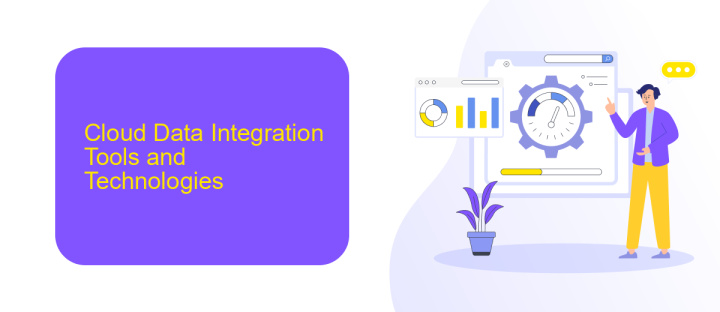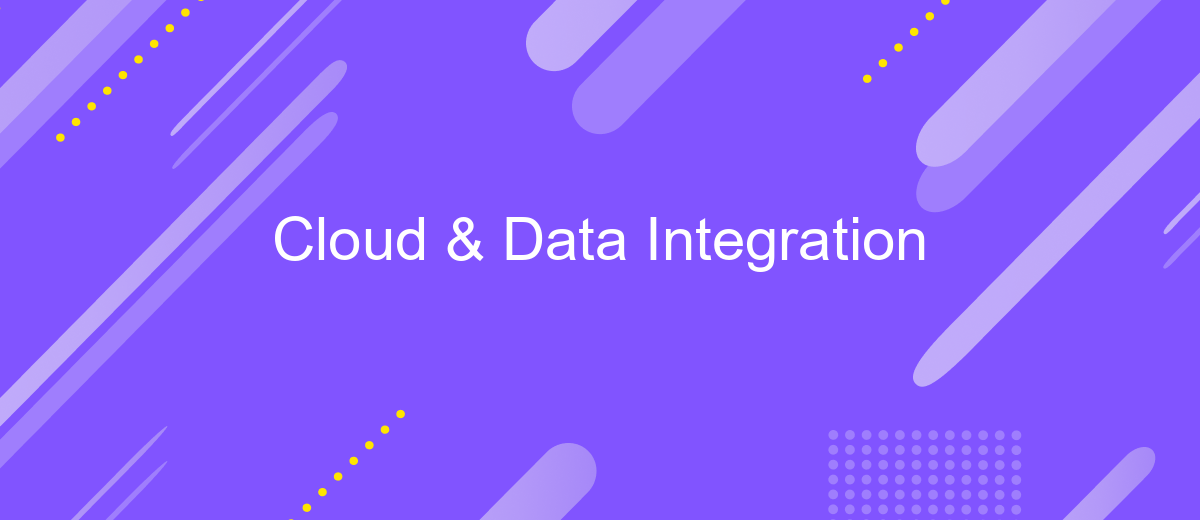Cloud & Data Integration
In the rapidly evolving digital landscape, cloud and data integration have become essential for businesses seeking agility and efficiency. By seamlessly connecting disparate data sources and cloud services, organizations can unlock valuable insights, streamline operations, and drive innovation. This article explores the key benefits, challenges, and best practices for implementing effective cloud and data integration strategies.
Big Data and Cloud Integration
Big Data and Cloud Integration have become essential components in modern business environments, enabling organizations to manage and analyze vast amounts of data efficiently. The integration of these technologies allows for seamless data flow between various systems and applications, facilitating real-time data processing and decision-making.
- Scalability: Cloud services provide the flexibility to scale resources up or down based on data volume.
- Cost Efficiency: Pay-as-you-go models reduce the need for significant upfront investment.
- Accessibility: Data can be accessed from anywhere, ensuring continuous business operations.
- Security: Advanced encryption and security protocols protect sensitive information.
- Automation: Tools like ApiX-Drive simplify the integration process, automating data transfers and workflows.
Utilizing services like ApiX-Drive can significantly streamline the integration process, allowing businesses to connect multiple data sources without extensive technical expertise. This not only saves time but also ensures that data is consistently updated and synchronized across platforms, providing a unified view for better analytics and insights. As a result, companies can make more informed decisions, driving growth and innovation.
Cloud Data Integration Tools and Technologies

Cloud data integration tools and technologies are essential for businesses to seamlessly connect and manage data across various cloud platforms. These tools facilitate the synchronization and migration of data, ensuring real-time access and consistency. Popular cloud data integration tools include Informatica Cloud, Dell Boomi, and MuleSoft, which offer robust features for data mapping, transformation, and workflow automation. These platforms support a wide range of data sources and destinations, enabling organizations to streamline their data processes and enhance operational efficiency.
One noteworthy service in this domain is ApiX-Drive, which simplifies the integration process by providing an intuitive interface for connecting various applications and services. ApiX-Drive supports numerous integrations out-of-the-box, allowing users to automate data workflows without extensive coding knowledge. This service is particularly beneficial for small to medium-sized businesses looking to optimize their data integration efforts without significant investment in IT resources. By leveraging tools like ApiX-Drive, companies can ensure seamless data flow and improve decision-making processes based on accurate and timely information.
Benefits and Challenges of Cloud Data Integration

Cloud data integration offers numerous benefits, allowing businesses to seamlessly connect various data sources and applications. This integration enhances data accessibility, improves collaboration, and provides real-time insights, which are critical for informed decision-making. Additionally, cloud solutions are scalable, cost-effective, and reduce the need for extensive on-premises infrastructure.
- Enhanced Data Accessibility: Access data from anywhere, anytime.
- Improved Collaboration: Share data effortlessly across teams.
- Real-Time Insights: Make data-driven decisions faster.
- Scalability: Easily scale resources to meet demand.
- Cost-Effectiveness: Reduce costs associated with physical infrastructure.
However, cloud data integration also presents challenges such as data security concerns, potential downtime, and the complexity of integrating diverse systems. Services like ApiX-Drive can help mitigate these challenges by offering user-friendly, reliable integration solutions that streamline the process and ensure secure data transfer. By leveraging such tools, businesses can overcome integration hurdles and fully capitalize on the advantages of cloud data integration.
Data Integration Patterns and Best Practices

Data integration is a critical aspect of modern business operations, enabling seamless connectivity between disparate systems and data sources. To achieve this, various integration patterns and best practices have been established to ensure efficient and reliable data flow.
One common pattern is the ETL (Extract, Transform, Load) process, which involves extracting data from source systems, transforming it into a suitable format, and loading it into a target system. Another approach is real-time data integration, which allows for immediate data processing and synchronization across platforms.
- Use a centralized integration platform to manage all data flows.
- Implement data validation and error handling mechanisms.
- Ensure data security and compliance with regulatory standards.
- Automate integration processes to reduce manual intervention.
Platforms like ApiX-Drive facilitate the setup of data integrations by providing user-friendly interfaces and pre-built connectors for various applications. By leveraging such tools, businesses can streamline their data integration efforts, reduce operational complexity, and enhance overall data accuracy and availability.


Case Studies and Real-World Applications
One notable case study in cloud and data integration involves a multinational retail company that leveraged ApiX-Drive to streamline its operations. The company faced challenges in synchronizing data across various platforms such as CRM, ERP, and e-commerce systems. By implementing ApiX-Drive, they were able to automate data transfers and ensure real-time updates across all systems. This not only reduced manual errors but also significantly improved data accuracy and operational efficiency.
Another real-world application can be seen in a healthcare organization that needed to integrate patient data from multiple sources for better clinical decision-making. Using cloud-based integration tools, they connected electronic health records (EHR) with laboratory information systems (LIS) and patient management systems. This integration enabled healthcare providers to access comprehensive patient data in one place, leading to improved patient outcomes and streamlined workflows. Such examples highlight the transformative power of cloud and data integration in various industries.
FAQ
What is Cloud Data Integration?
Why is Cloud Data Integration important?
What are the key challenges in Cloud Data Integration?
How can I automate data integration processes?
What should I consider when choosing a data integration tool?
Strive to take your business to the next level, achieve your goals faster and more efficiently? Apix-Drive is your reliable assistant for these tasks. An online service and application connector will help you automate key business processes and get rid of the routine. You and your employees will free up time for important core tasks. Try Apix-Drive features for free to see the effectiveness of the online connector for yourself.

